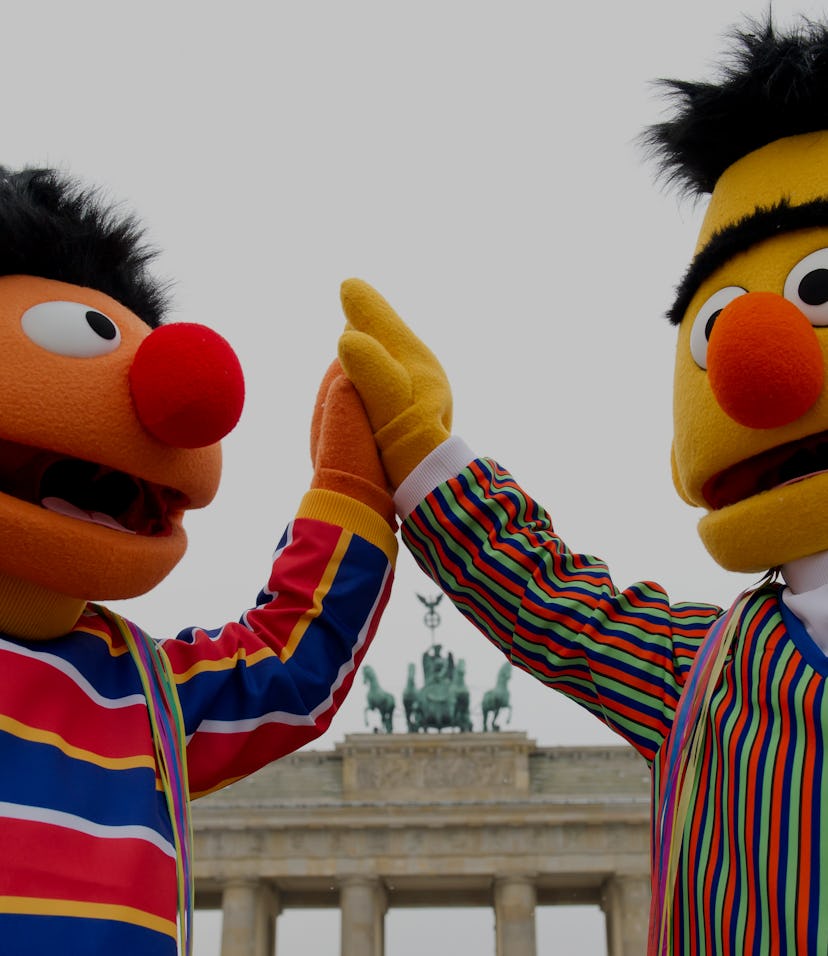Culture
Amazon named robots after Muppets because it's running out of humanity
Bert and Ernie aren’t even top-of-the-line robots.

Amazon has named its new warehouse robots “Bert” and “Ernie” after the Sesame Street characters of the same name. The company announced this fact back in June — just before Prime Day — in a quiet manner (mid-blog) that somehow makes it even stranger.
Bert and Ernie are both meant to make warehouse workflows easier for human workers. Ernie is a “workstation system” that takes totes off a specialized shelf and uses a robot arm to deliver them to employees, thereby eliminating the need for people to reach up or bend down over and over throughout the day. Bert is what Amazon is calling an “Autonomous Mobile Robot” (AMR), which essentially means it can traverse Amazon’s entire warehouse, rather than being confined to one area.
The purpose of these new robots is — like most robots — to make everyday tasks simpler for the humans running Amazon’s operations. As Slate points out, though, the Muppets robots’ purpose runs quite a bit deeper than just pushing things around in carts. They’re a bold attempt at humanity that falls firmly on its robotic face.
Substantially behind the curve — The press release in which Amazon mentions Bert and Ernie (there’s a Kermit, too) is cut-and-dry, for the most part focused on providing a brief technical overview for customers and investors. If there’s any affect to be found here, it’s in Amazon’s assertions that these are top-notch, brand new tech that will dramatically alter the lives of the workers graced with their presence.
Here’s the thing: These are not, in fact, new technology. A report from IEEE Spectrum, published just days after Amazon’s announcement, proves as much. “If we’re to take the capabilities of the robots that Amazon showcased over the weekend at face value, the company appears to be substantially behind the curve on warehouse robots,” the report claims.
Not just a little behind — substantially so. “The slow speed, the careful turns, the human chapterones — other AMR companies are way past this stage,” experts told IEEE Spectrum.
Helpful little critters — Amazon is consistently fighting against the main narrative of its existence. The company’s expansion values profits over human lives at every turn, but this isn’t how Amazon wants its workers to feel about their jobs (or for the public to feel about those workers). Amazon at every turn pushes the narrative that its workers do come first, always, and therefore they are thriving.
Bert, Ernie, and Kermit are just another chance for Amazon to continue this thread. Don’t think of them as robots that could potentially take your warehouse job, Amazon says — no, think of them as cute, furry Jim Henson puppets that can lend a helping hand.
But they’re not. They’re robots, and not even cute-looking ones at that.
It’s difficult to overstate just how transparent this attempt at humanity is, in contrast with the reality of working as an Amazon contractor. This is the same company that allows algorithms to decide which workers are fired (and then lets computers take care of the firing process, too). It verges on performance art. Bert and Ernie aren’t art, though — they’re just another symptom of Amazon’s complete lack of empathy.